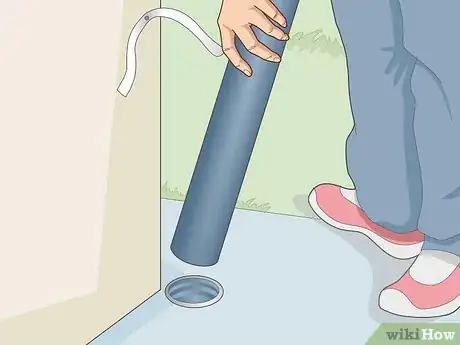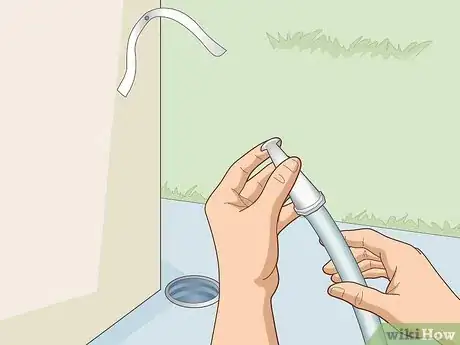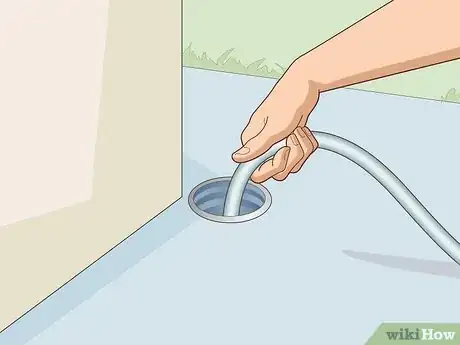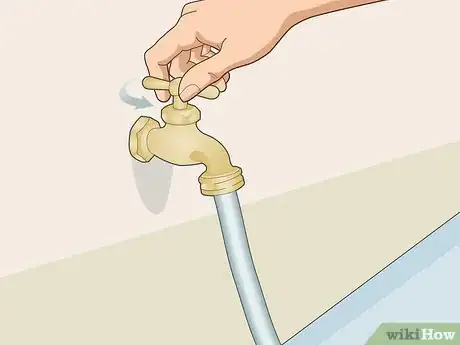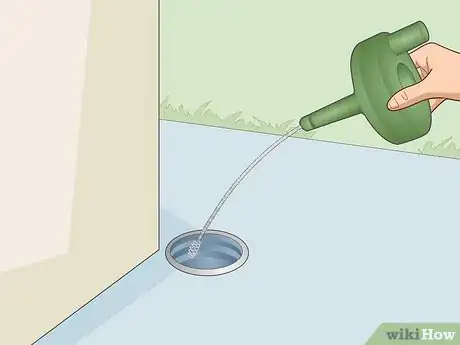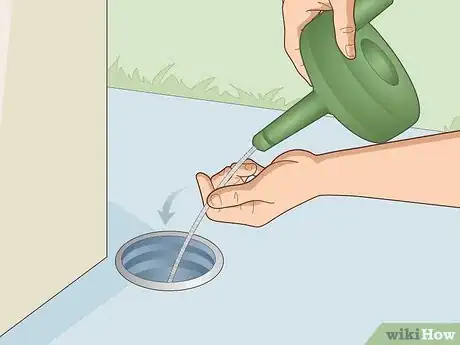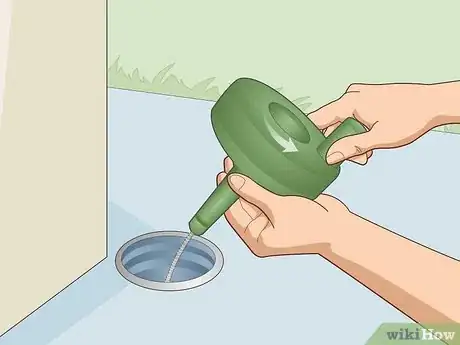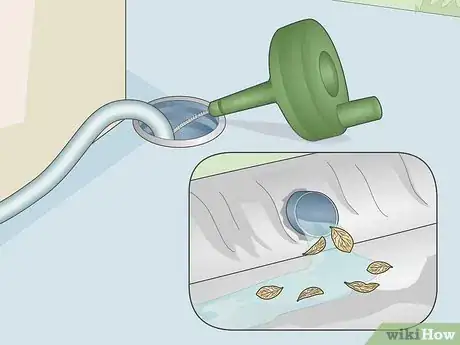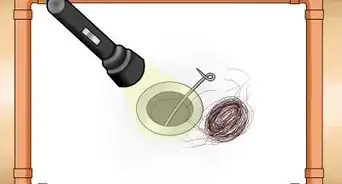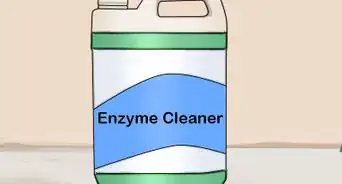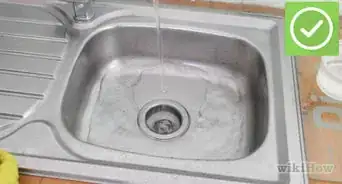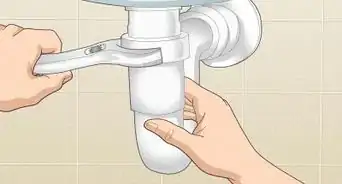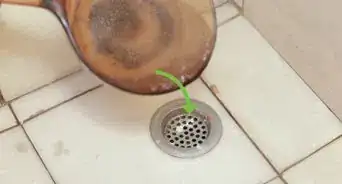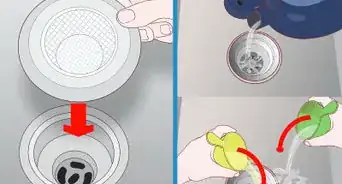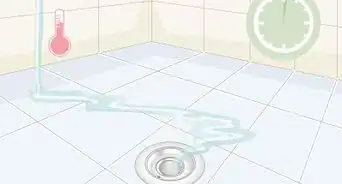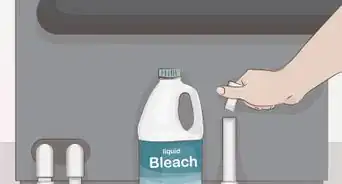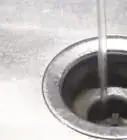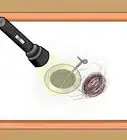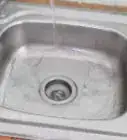This article was co-authored by David Balkan. David Balkan is a Professional Plumber, CEO of Balkan Sewer and Water Main Service, and President of Balkan Sewer and Drain Cleaning. As a hands-on owner of these companies for over 40 years, David is knowledgeable about water service lines, sewers, and drain line issues. David is a Committee Chairman of the Master Plumbers Council and has sat on the Executive Committee of the Sub Surface Plumbers Association of New York for over 30 years. His knowledge and solution-oriented approach contributed to Balkan Sewer and Water Main Service being the largest and most trusted service in New York City and the recipient of the 2017 Angie’s List Super Service Award.
This article has been viewed 45,673 times.
A downpipe drain is the underground pipe that runs water from gutters away from a building and usually lets out at the curb. Over time, leaves, dirt, and other debris can clog up the pipe. If your downpipe isn’t draining or water is flowing out the back, then it’s probably clogged. First, try to dislodge it by feeding a hose into the pipe and hitting the clog with a high-pressure nozzle. If that doesn’t work, insert a plumbing snake into the pipe and break the clog up manually. With either method, you should be able to unclog your pipe without any expensive fixes or replacements.
Steps
Using Water Pressure
-
1Remove the downspout from the pipe. The downspout is the pipe that runs down the building from the gutter to the underground downpipe. You have to remove the spout to access the downpipe. Remove the screws at the top of the downspout connecting it to the gutter. Then unscrew the straps attaching the spout to the house. Lift the spout out of its position at the opening of the downpipe.[1]
- Depending on how tall the downspout is, you may need a ladder to reach the top. If so, make sure the ladder is on a flat, stable surface and don't stand on the top step to maintain your balance.
- Remember that sometimes the downspout is clogged, not the downpipe. Look down the spout with a flashlight before removing it to see if there is a blockage in there. If so, spray down with a high-pressure hose to dislodge it.
-
2Attach a high-pressure nozzle onto your garden hose. The hose’s normal pressure probably won’t be enough to dislodge the clog. Get a high-pressure nozzle to focus more pressure onto the blockage. Attach it to the front of your hose.[2]
- You can buy high-pressure nozzles from the hardware store or order one online.
- Make sure the nozzle doesn’t have to be squeezed. You won’t be able to squeeze it while it’s in the pipe.
Advertisement -
3Insert the hose into the underground pipe until it stops. Begin feeding the hose into the pipe. Push until the hose stops, indicating that you’ve probably reached the blockage.[3]
- If your hose is too short, you can get an extender. Otherwise, just start spraying the water when the hose reaches its max length.
-
4Turn the water on as high as it goes. With the hose right up against the blockage, go and turn the water on. Let the hose spray and see if it dislodges the clog.[4]
- In some cases, the clog might be loose enough for the hose to poke right through it. If this happens, try spraying some water down the pipe anyway to clear up the rest of the clog.
-
5See if water and debris come out the other side of the pipe. Go to the spot where the pipe lets out. If water and debris are coming out, then the clog was dislodged. Leave the hose in place until only water is coming out with no debris. This indicates that the clog is totally gone.[5]
- Give the pipe a final test by pulling the hose out and removing the high-pressure nozzle. Then insert the hose again and turn it on low pressure. If the water comes out the other side, then the clog is gone.
Snaking out a Clog
-
1Insert a handheld plumbing snake into the pipe if the hose didn’t work. If the water wasn’t strong enough to dislodge the blockage, you’ll have to remove the clog manually. A plumbing snake is a tool that plumbers use to clear drains. It has a wire string that you can lower down a drain and a spool that spins it to dislodge clogs. Get one from a hardware store and insert it into the downpipe.[6]
- Snakes are a handy tool to keep around your home at all times because they can unclog any drain you have. If you don’t want to purchase one, hardware stores may rent them as well.
- Do not use a power snake. Underground drains are usually PVC pipes, and power snakes could break them.[7]
-
2Feed the snake into the pipe until it stops. Insert the tip of the snake into the pipe and feed it through by pulling more wire out of the casing. Continue until you can’t push the snake any further, indicating that you’ve found the clog.[8]
- Standard plumbing snakes are 50 feet (15 m). This should be enough for most downpipe drains, but if yours is longer, get a larger snake.
-
3Turn the handle on the snake to break up the clog. Once you hit the clog, turn the screw on the front tip of the snake to the right. This locks the snake in place. Then turn the handle on the casing to spin the wire. This breaks up the clog. Work the snake back and forth a few times while spinning to get any remaining debris.[9]
- Leave the snake in until after you check that the clog is dislodged so you don't have to re-insert it.
-
4Run water through the pipe to see if the clog came loose. Once you think you’ve broken up the clog, leave the snake in the drain and go get your hose. Spray it down into the pipe and see if water comes out the other side. If it does, then you successfully unclogged the pipe. If not, continue working the snake further to find other blockages.[10]
- Leave the water running for a few minutes to wash away any remaining debris. Turn the hose off when only water is coming out with no debris.
Things You’ll Need
Using Water Pressure
- Screwdriver
- Garden hose
- High-pressure nozzle
Snaking Out a Clog
- Plumbing snake
- Garden hose
References
- ↑ https://www.thisoldhouse.com/ask-toh/backed-downspouts
- ↑ https://youtu.be/k6q_Ct5zl54?t=151
- ↑ https://www.thisoldhouse.com/ask-toh/backed-downspouts
- ↑ https://www.thisoldhouse.com/ask-toh/backed-downspouts
- ↑ https://www.thisoldhouse.com/ask-toh/backed-downspouts
- ↑ https://www.houselogic.com/organize-maintain/diy-repair/how-to-unclog-gutter/
- ↑ https://www.thisoldhouse.com/ask-toh/backed-downspouts
- ↑ https://youtu.be/k6q_Ct5zl54?t=134
- ↑ https://youtu.be/k6q_Ct5zl54?t=137
